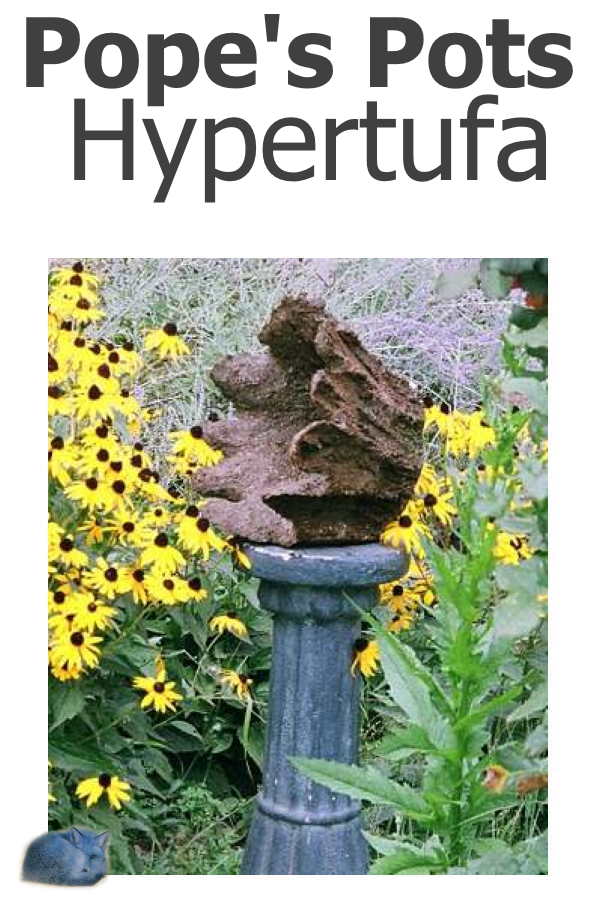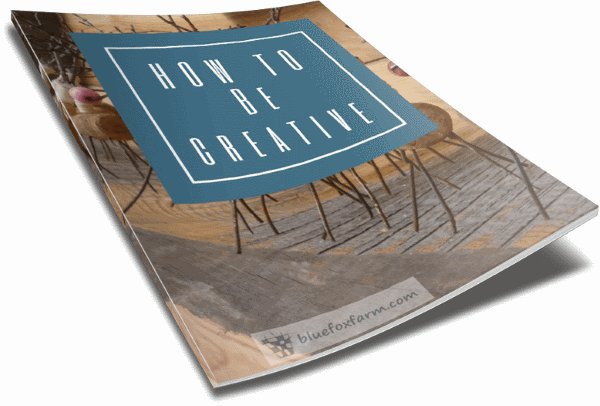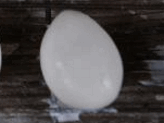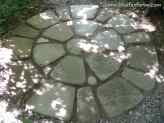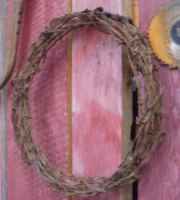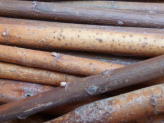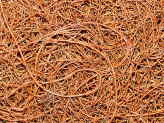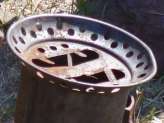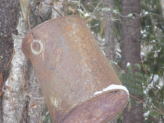Popes Pots Hypertufa
Deb Popes Story
"Having spent my life as a "country girl", riding, owning my own horses and learning about showing horses from the horse farm of a close friend, animals and an appreciation of the land became second nature."
"Time spent on my family farms in the Deep South and the beautiful hunt country of Virginia exposed me to the beautiful architecture and pieces so prevalent in Southern plantations and elegant homes.
It must come naturally to create and love the land; one grandfather built yachts and the other raised timber and cotton.
I'm not sure how the yacht builder would feel about the lines of my troughs – not one plumb side to be found.
Home, however, is the northeast in Central Massachusetts with its short growing season and harsh climate."

"When it came time to start putting together gardens and landscapes of my own, I began looking for planters, fountains and troughs of stone or concrete.
Searching through gardening books and magazines I came across concrete planters, how to construct and plant them, etc.
Although I could appreciate them, there was something cold looking about the concrete and not to mention the weight, which is considerable.
I came across literature about "tufa" limestone rock found near streams and riverbeds which has been eroded away by water."
"In Europe, watering troughs were carved out of tufa. The water troughs had, with the passage of time and progress become obsolete. Pictures of European gardens have those old watering troughs planted with a wide variety of plants, many of which are alpines.
Further research led me to a recipe for hypertufa which is a mixture of Portland cement, peat moss and perlite.
It looked interesting to me, as the hypertufa is 75% lighter than concrete and has an immediate weathered look which appeals to my taste for old and natural looking containers in gardens."
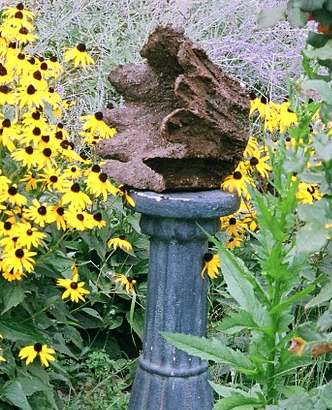 Pedestal with a hypertufa creation
Pedestal with a hypertufa creation"The troughs get mossy and more and more natural looking with the passage of time.
Loving to putter around and make things, I gave it a go and made a few for my own use, then asked a friend who owns a local nursery if he felt that other gardeners would like them.
He concurred, and the rest, as they say, is history.
The recipe I use for hypertufa is one part Portland cement to one and one-half parts sifted peatmoss to one and one-half parts perlite.
A handful of fiberglass reinforcing fibers is added as a secondary reinforcement, much like horse hair was added to the old plasters to help bind it together.
Water is then added to dampen the mixture. It is not poured like concrete, but packed into the molds. Sand can also be added to add strength to the larger troughs."
"However, when you add in sand you are also adding weight back in, so one has to make a determination about what they want.
My troughs also have drainage holes.
The life of a trough is anticipated to be about 10 to 15 years; some last longer, some less.
Troughs can stay outside year round; I have left them outside in every conceivable way to try to break them; empty, on the ground, off the ground, full of soil, upside down, etc. I haven't broken one yet.
I believe that if left in a location where they would get soaked, frozen, thawed out; soaked and re-frozen that is a situation for disaster."
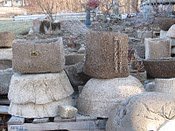 Selection of troughs and pots
Selection of troughs and pots"It is my belief that trough longevity is directly related to the compression of the hypertufa mixture during making.
Also, too much water added to the recipe as well as rushing the curing period makes the trough weak.
Optimum cure period is 28 days; the more you rush the cure the less the longevity.
Not knowing where to launch my new found business, I went to the phone book and started making calls to local botanical gardens and asking if they had any venues where the troughs could be sold.
Tower Hill Botanical Garden in Boylston, Massachusetts invited me to participate in its annual fall Gardeners' Emporium, and horticultural folks being more than generous in sharing their knowledge, helped me along the road by recommending other sale venues to contact, teaching me about plants and opening up their greenhouses and homes to me."
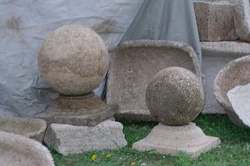
"Gradually, people started seeking me out at sales and also asking if I would teach.
Through teaching at garden clubs and at the botanical gardens, I have been able to help many, many people make troughs of their own.
Each class is always and experience and many laughs are shared by all!!
Teaching trough making has been a great source of enjoyment for me. Everyone brings their own ideas to the table and I almost always walk away from a class with an inspiration for something new.
I love to incorporate pieces of old cast iron or chains – anything from the dump that can add the unexpected.
I am constantly on the lookout for containers in interesting shapes which can be used for molds.
It is my particular style to make troughs with soft lines; nothing that is perfectly straight or stiff that looks like it was made on a machine."
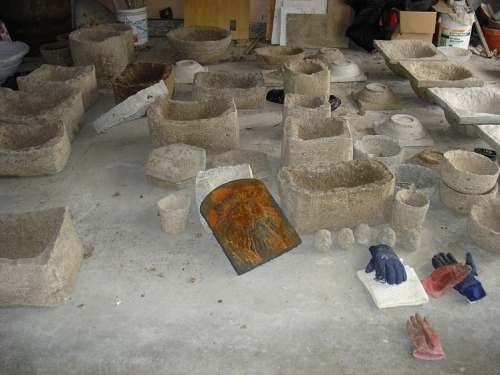 Troughs and pots curing
Troughs and pots curing"Cardboard boxes, wicker baskets, bowls – I used them all. Cardboard boxes are probably my favorite as they "give" and collapse during trough making every one of my troughs is different – there are no two alike.
I search the internet for latex molds, and have found a woman in Great Britain who has a great line of molds. The little faces are made from her molds. I call them “my little friends”."

"There is a gardening story that the faces are actually "grots" (short for grotesques).
Grots are shy little creatures and the reason you don't see them is because they live underground and only poke their heads up to see what is going on, and then only in groups (shy, remember) from under bushes, etc.
They scare the weeds out of your gardens. Also, do not paint them bright colors because they don't like it and will retaliate."
"The hypertufa troughs are great for planting as they help insulate from temperature extremes; the heat of the summer and the cold of the winter.
I use them to plant everything from alpines to annuals – anything except bulbs as bulbs would probably freeze in our Zone 5 above the ground all winter.
Miniature hostas, Sempervivum, Sedum; everything survives the New England winters in them.
Where a plastic pot will fry your plants in the summer heat if left, for example, on a sunny deck, the hypertufa protects the roots from the extreme heat. Impatiens, Mandevilla, pansies, zinnias – anything you use a pot for can grow and flourish in hypertufa.
Also, I love to find old “junk” and repurpose it for gardens. An office building from the early 1900's was being renovated and the vent caps which were made of strips of tin welded together in the shape of an onion dome were being thrown away, and I quickly scooped them up to use as garden features. Anything can catch my eye."
"Having a friend with an "antiques and collectibles" (with the emphasis on "collectibles" (ahem)) store right around the corner from my house keeps me in constant mischief searching for treasurers to either use or resell at trough sales.
That is where the vent caps went – to a botanical garden sale – gone as soon as they came out of the trailer.
My eyes are always roving in gardens, magazines, antiques stores, horticulture books, New York's Chinatown, on the lookout for ideas. The troughs are great to use in gardens stacked up on bricks, other troughs, or stones – anything that gives different levels and depth to a garden – points of interest; texture.
Troughs are also great indoors."
"Some customers will take a rectangular trough and insert square candles in glass containers and insert in a fireplace for the summer or on the hearth for a decoration. Anything!! Think outside that box!!!
My vocation is a paralegal – paralegal by day – pot maker by night. I have a dry sense of humor and try to bring fun into my gardens, decorating, gardenscapes and classes (after all, it ain't brain surgery – it's flower pots!!)."
To find out how to contact Deb or for more information on hypertufa trough sales or classes, go to her blog - Popes Pots.
Learn what it takes to be creative - we all have the gene but how do we develop it? Get the free guide!
Fill in the form below for your copy;
(Don't be disappointed - use an email address that will accept the free download - some .aol email addresses won't.
If you don't see your download within a few minutes, try again with another email address - sorry for the bother.)
